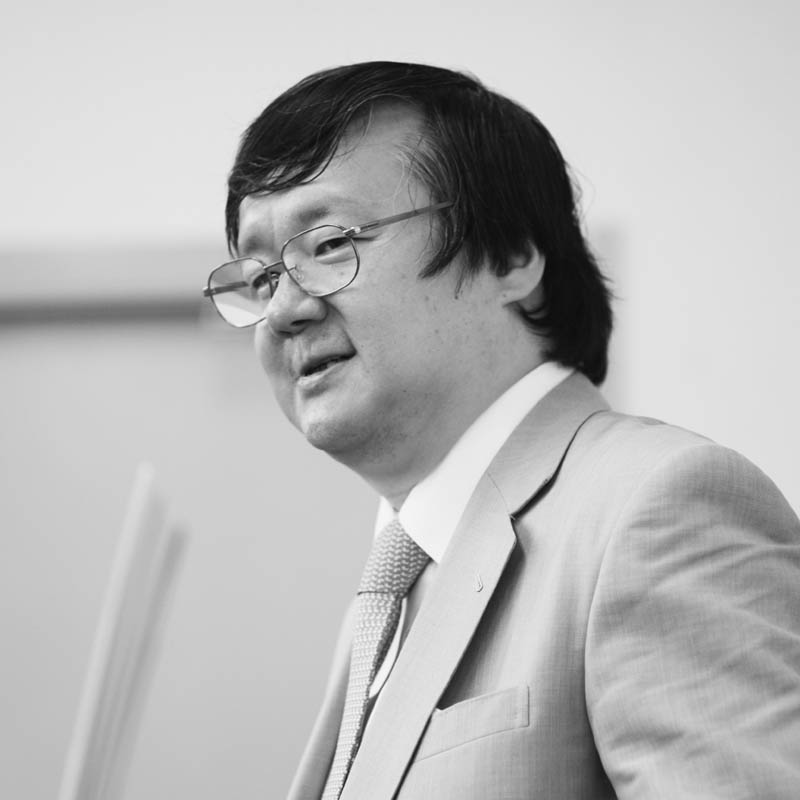
- ARAB NEWS
- 09 Jul 2025

Nader Sammouri
OSAKA: Tokyo-based Taro Yamamoto lives in a world of typography and graphic design. He is a senior manager of Japanese typography at Adobe Systems, who develops Japanese typefaces and assists engineers in implementing typography.
Every space matters and the bends of each letter tells something.
Yamamoto, who is the president of the Society of Typography in Japan and who lectures typographic theory at Musashino Art University, shares his personal views on how he sees minimalism and practices it in his discipline, saying:
“You should not add anything unnecessary when you create. I believe you can be a minimalist in typography or document production if you agree with the following points; suppose I am making a document, and I have already finished writing the main body text. I still have very many decisions to make and options regarding the layout and typography. What typeface should I use for the body text and the titles? How long should each line in the main body text be? How much line space should be given? How large should the standard type area be relative to the given page size? How should I arrange textual and graphic elements? I need to answer all these questions to complete the document.”
“Some people think that the simplified and abstract nature of Japanese dry gardens, which are influenced by Zen Buddhism in China in the Song dynasty, represent a kind of minimalism,” Yamamoto said.
Many of today’s Japanese dry gardens have been designed by referring to landscape paintings created by Chinese master painters. One of the characteristics of the painting style is that scarce elements are surrounded by a large amount of white space.
“When details such as that of the landscape are omitted, the viewer can imagine various things; for example, you may imagine a long and winding mountain path. The viewer begins to imagine and build the details in his head. Masterpieces of Chinese and Japanese landscape painting have this kind of power stimulating the viewer’s imagination. Here, the appreciation of a painting becomes a collaboration between the painter and the viewer. Although you may find some formal and visual effects of minimization and simplification in this kind of painting, nothing is minimized in the viewer’s mind as the viewer can see everything,” Yamamoto said.
This is one of the rich factors of minimalism that is clearly represented in painting works. When a work abstractly displays itself, it leaves the rest of the work for the imagination.
“I think it may be too simplistic to discuss minimalism on the dualistic axis of simplicity versus complexity. I think there are cases where even a minimalist needs to make something of a complicated structure, composed of many elements, each of which may require precision work. There may also be a simple and solid concept under the surface of something that looks very complicated or decorative,” Yamamoto said.
Taro tries to melt the border between simplicity and complexity, for what appears to be simple can carry a complex structure behind it and the other way around.
“I am a little skeptical about the antagonistic contradiction between minimalism and luxury. Although the word ‘minimalism’ may imply an austere and modest attitude to art and life, it can help you create something not only beautiful in appearance, but also spiritually profound and rich,” Yamamoto said.
Taro implies that the seemingly contradictory relationship between minimalism and luxury may not be so opposing after all, for minimalism and frugality can breed luxury and richness.
Regulated fasting could be perceived as a minimalistic and austere approach for the stomach that aims for a physical change, but more a psychological one. Praying or meditation could also be seen as a minimalistic approach to managing the mind by emptying it and giving it the space to make the necessary connections that it needs. In that way, minimalism can be seen as a spiritual act, luxurious in its own unseen way.
When it comes to minimalism in some parts of the MENA region, the lifestyle of Bedouins comes to mind, the nomadic people of North Africa and the Arabian Peninsula, who represent a tiny segment of the total population in the countries that they embody.
Bedouins are animal herders who wander into the desert piercing the drizzling winter and return to civilized land in the dry summer months. They are known for their mobility and adjustment to austere environments. They survive in shortages of water and other resources and yet are known for their generous hospitality.
“I have been to some countries in the Middle East, but what I know about the culture of Bedouins is very limited. I have read that they have been inheriting their own cultural traditions and creating beautiful things in the field of textile art,” Yamamoto said.
Bedouins thrive with the essentials, traveling long distances with few possessions. What is more than necessary is just a burden and an extra weight in their voyage. Their pride comes by shielding their happiness from needless things, perhaps by accepting the desert as sufficient and being grateful for what comes along the way.
Have people lost the meaning of happiness by seeking it too much, or by owning too many to the extent that too many became nothing? And has the pandemic situation been a “forced lesson” to lecture us on that?